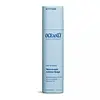What's inside
What's inside
 Key Ingredients
Key Ingredients

No key ingredients
 Benefits
Benefits

 Concerns
Concerns

 Ingredients Side-by-side
Ingredients Side-by-side

Water
Skin ConditioningAloe Barbadensis Leaf
MaskingSodium Hyaluronate
HumectantNiacinamide
SmoothingPropanediol
SolventPalmitoyl Tripeptide-1
Skin ConditioningPalmitoyl Tripeptide-5
Skin ConditioningPalmitoyl Tetrapeptide-7
Skin ConditioningButyrospermum Parkii Butter
Skin ConditioningVitis Vinifera Seed Oil
EmollientLeuconostoc/Radish Root Ferment Filtrate
AntimicrobialCetearyl Olivate
Sorbitan Olivate
EmulsifyingSqualane
EmollientSimmondsia Chinensis Seed Oil
EmollientN-Hydroxysuccinimide
Skin ConditioningChrysin
Skin ConditioningCaprylic/Capric Triglyceride
MaskingStearic Acid
CleansingCoco-Caprylate
EmollientHelianthus Annuus Seed Oil
EmollientUbiquinone
AntioxidantGlyceryl Stearate
EmollientTocopherol
AntioxidantCetyl Alcohol
EmollientXanthan Gum
EmulsifyingAllantoin
Skin ConditioningWater, Aloe Barbadensis Leaf, Sodium Hyaluronate, Niacinamide, Propanediol, Palmitoyl Tripeptide-1, Palmitoyl Tripeptide-5, Palmitoyl Tetrapeptide-7, Butyrospermum Parkii Butter, Vitis Vinifera Seed Oil, Leuconostoc/Radish Root Ferment Filtrate, Cetearyl Olivate, Sorbitan Olivate, Squalane, Simmondsia Chinensis Seed Oil, N-Hydroxysuccinimide, Chrysin, Caprylic/Capric Triglyceride, Stearic Acid, Coco-Caprylate, Helianthus Annuus Seed Oil, Ubiquinone, Glyceryl Stearate, Tocopherol, Cetyl Alcohol, Xanthan Gum, Allantoin
Helianthus Annuus Seed Wax
Skin ConditioningButyrospermum Parkii Butter
Skin ConditioningJojoba Esters
EmollientSimmondsia Chinensis Seed Oil
EmollientDicaprylyl Ether
EmollientGlycerin
HumectantOlus Oil
EmollientUndecane
EmollientCaprylic/Capric Triglyceride
MaskingTridecane
PerfumingZea Mays Starch
AbsorbentBehenyl Behenate
EmollientWater
Skin ConditioningPolyhydroxystearic Acid
EmulsifyingSucrose Laurate
EmollientSucrose Stearate
EmollientAcacia Decurrens Flower Wax
EmollientPolyglycerin-3
HumectantEuphorbia Cerifera Wax
Hydrolyzed Soy Protein
HumectantFucus Vesiculosus Extract
EmollientGlycogen
HumectantRosmarinus Officinalis Leaf Extract
AntimicrobialRice Amino Acids
Skin ConditioningCaprylhydroxamic Acid
Glyceryl Caprylate
EmollientHydrolyzed Adansonia Digitata Seed Extract
Cocoyl Proline
Skin ConditioningHelianthus Annuus Seed Wax, Butyrospermum Parkii Butter, Jojoba Esters, Simmondsia Chinensis Seed Oil, Dicaprylyl Ether, Glycerin, Olus Oil, Undecane, Caprylic/Capric Triglyceride, Tridecane, Zea Mays Starch, Behenyl Behenate, Water, Polyhydroxystearic Acid, Sucrose Laurate, Sucrose Stearate, Acacia Decurrens Flower Wax, Polyglycerin-3, Euphorbia Cerifera Wax, Hydrolyzed Soy Protein, Fucus Vesiculosus Extract, Glycogen, Rosmarinus Officinalis Leaf Extract, Rice Amino Acids, Caprylhydroxamic Acid, Glyceryl Caprylate, Hydrolyzed Adansonia Digitata Seed Extract, Cocoyl Proline
Ingredients Explained
These ingredients are found in both products.
Ingredients higher up in an ingredient list are typically present in a larger amount.
This ingredient is also known as shea butter. It is an effective skin hydrator and emollient.
Emollients help soothe and soften your skin. It does this by creating a protective film on your skin. This barrier helps trap moisture and keeps your skin hydrated. Emollients may be effective at treating dry or itchy skin.
Shea butter is rich in antioxidants. Antioxidants help fight free-radicals, or molecules that may harm the body. It is also full of fatty acids including stearic acid and linoleic acid. These acids help replenish the skin and keep skin moisturized.
While Shea Butter has an SPF rating of about 3-4, it is not a sunscreen replacement.
Shea butter may not be fungal acne safe. We recommend speaking with a professional if you have any concerns.
Learn more about Butyrospermum Parkii ButterThis ingredient is an emollient, solvent, and texture enhancer. It is considered a skin-softener by helping the skin prevent moisture loss.
It helps thicken a product's formula and makes it easier to spread by dissolving clumping compounds.
Caprylic Triglyceride is made by combining glycerin with coconut oil, forming a clear liquid.
While there is an assumption Caprylic Triglyceride can clog pores due to it being derived from coconut oil, there is no research supporting this.
Learn more about Caprylic/Capric TriglycerideThis oil comes from the seeds of the desert shrub called Jojoba. It is more commonly known as jojoba oil, a non-comedogenic oil.
Jojoba oil does not contain fragrance and has many fatty-acids, making it a great soothing ingredient.
It also contains Vitamin E, a great moisturizing ingredient. Vitamin E is also an antioxidant and protects your skin against oxidative damage.
This ingredient humectant properties, meaning it helps draw moisture from the air. This helps keep your skin hydrated.
While jojoba has antibacterial properties, it is only able to kill some strains of bacteria.
Studies also show it helps in wound healing. In fact, Indigenous cultures have used jojoba as a moisturizer and to help treat burns for centuries.
Fun fact: Jojoba oil similar to natural human skin sebum, so it has a great effect on dry skin. It is also promising with helping to regulate sebum production.
Due to its fatty acid content, Jojoba oil may not be fungal acne safe. We recommend speaking with a professional if you have any concerns.
Learn more about Simmondsia Chinensis Seed OilWater. It's the most common cosmetic ingredient of all. You'll usually see it at the top of ingredient lists, meaning that it makes up the largest part of the product.
So why is it so popular? Water most often acts as a solvent - this means that it helps dissolve other ingredients into the formulation.
You'll also recognize water as that liquid we all need to stay alive. If you see this, drink a glass of water. Stay hydrated!
Learn more about Water